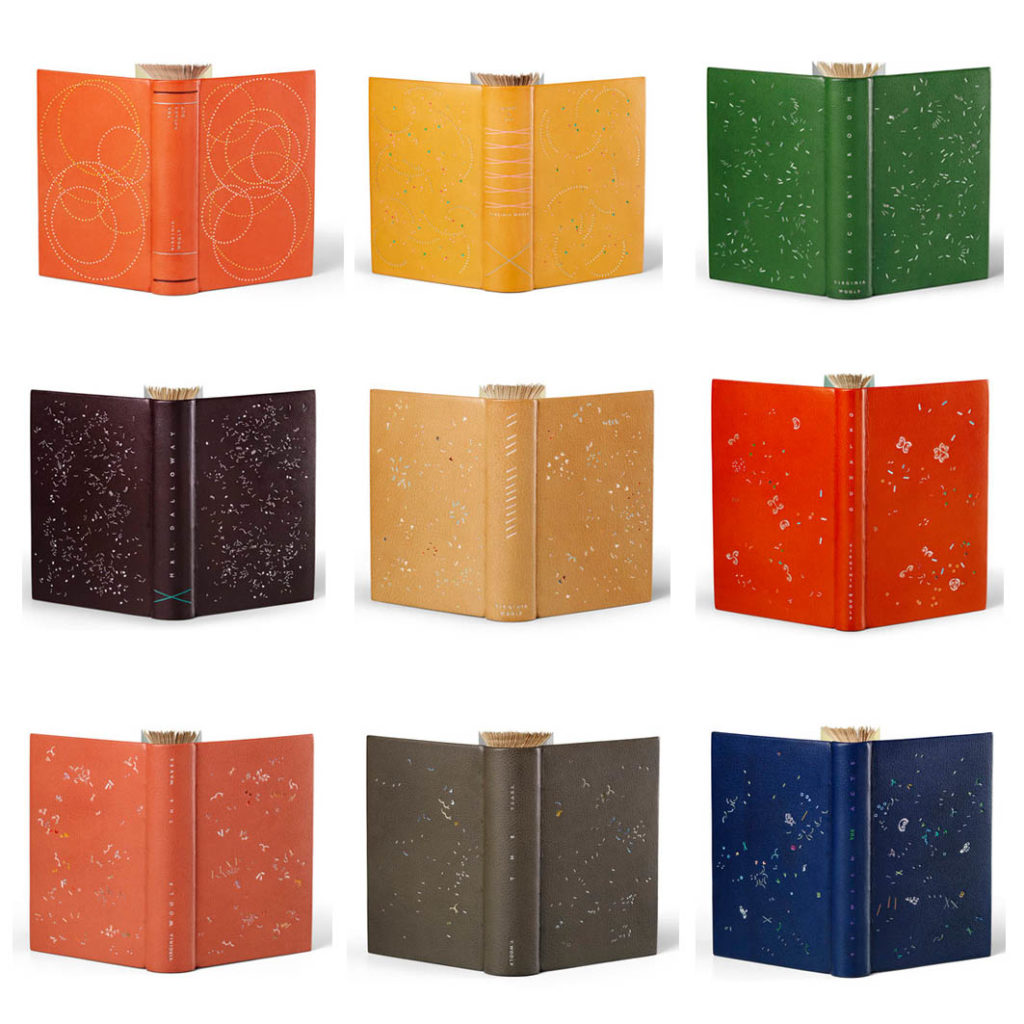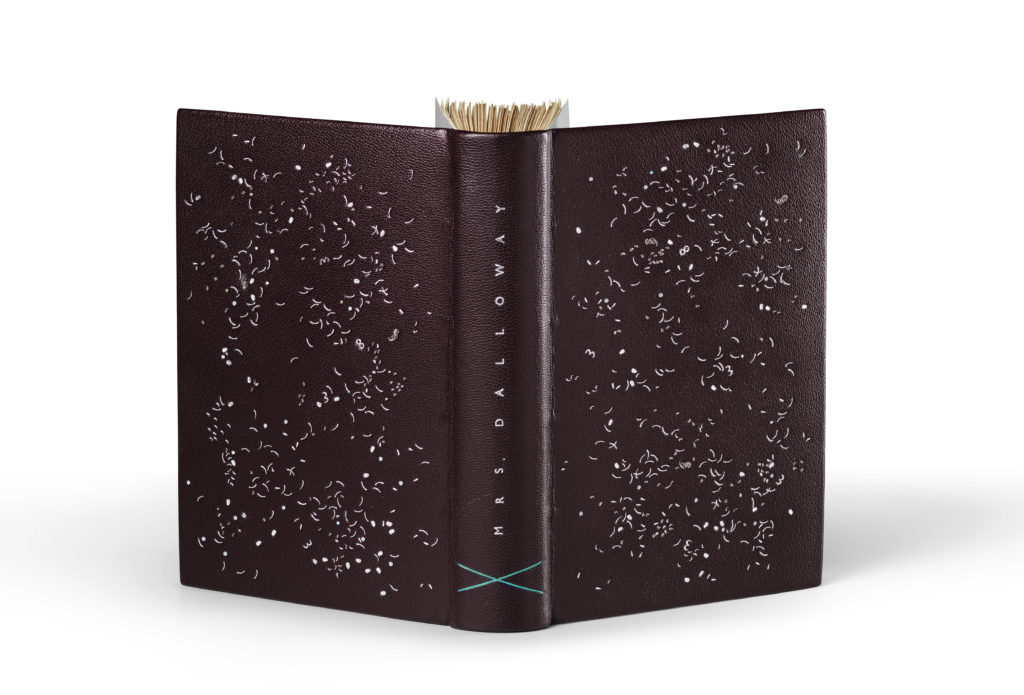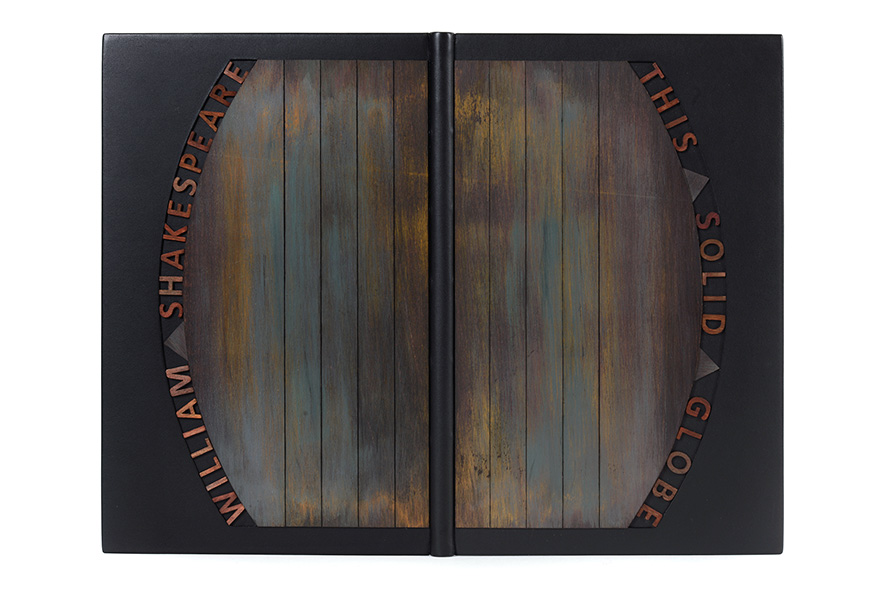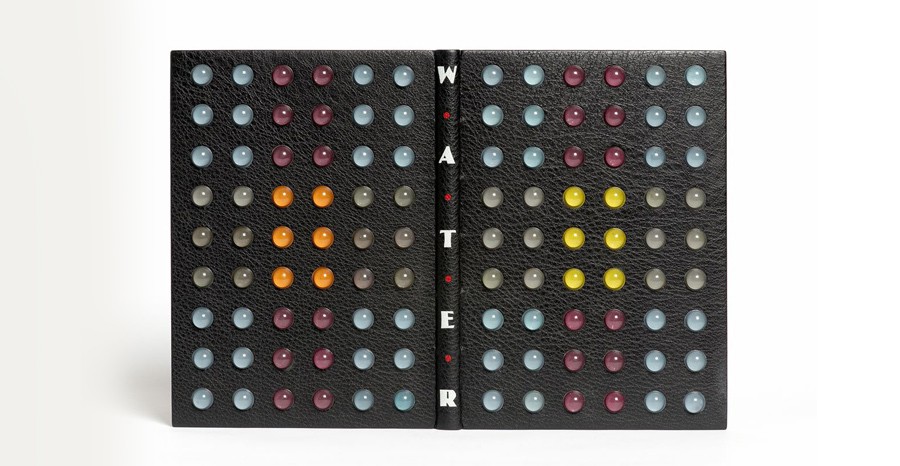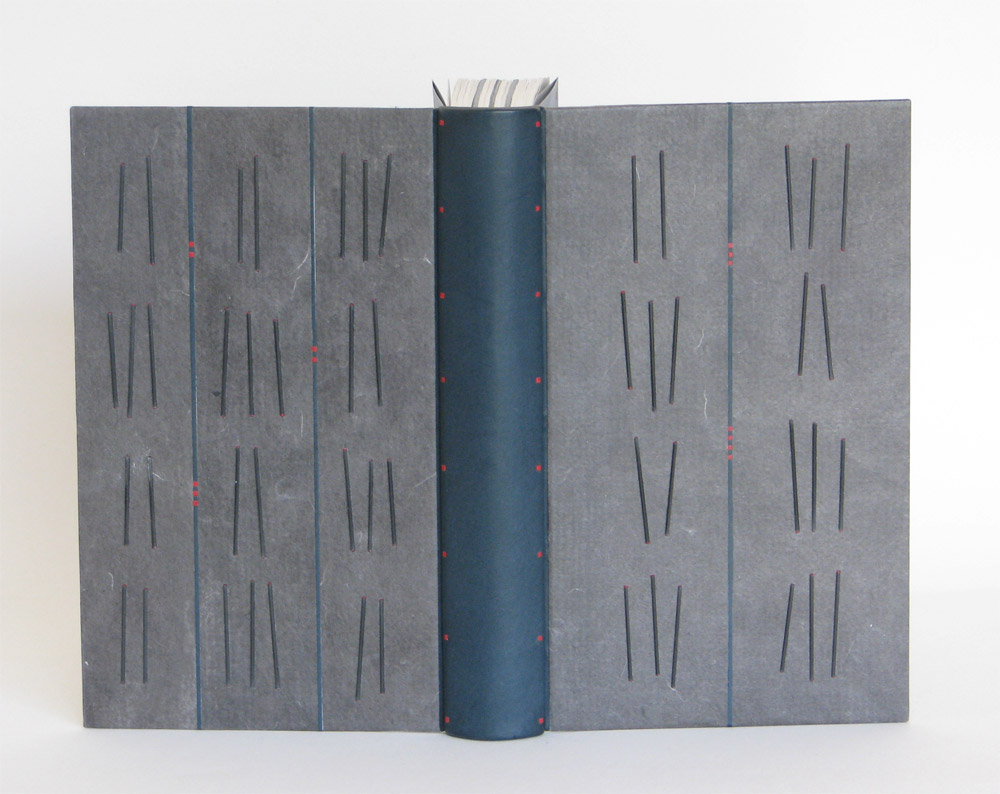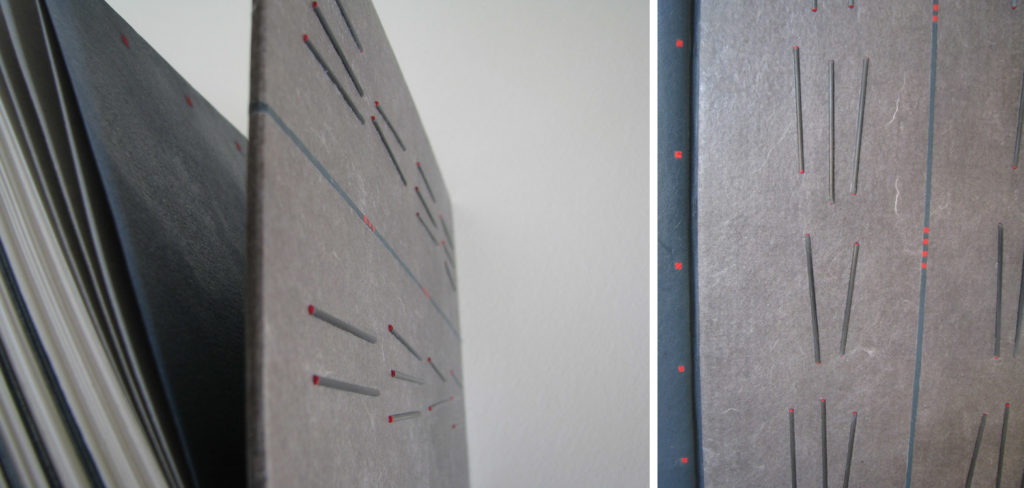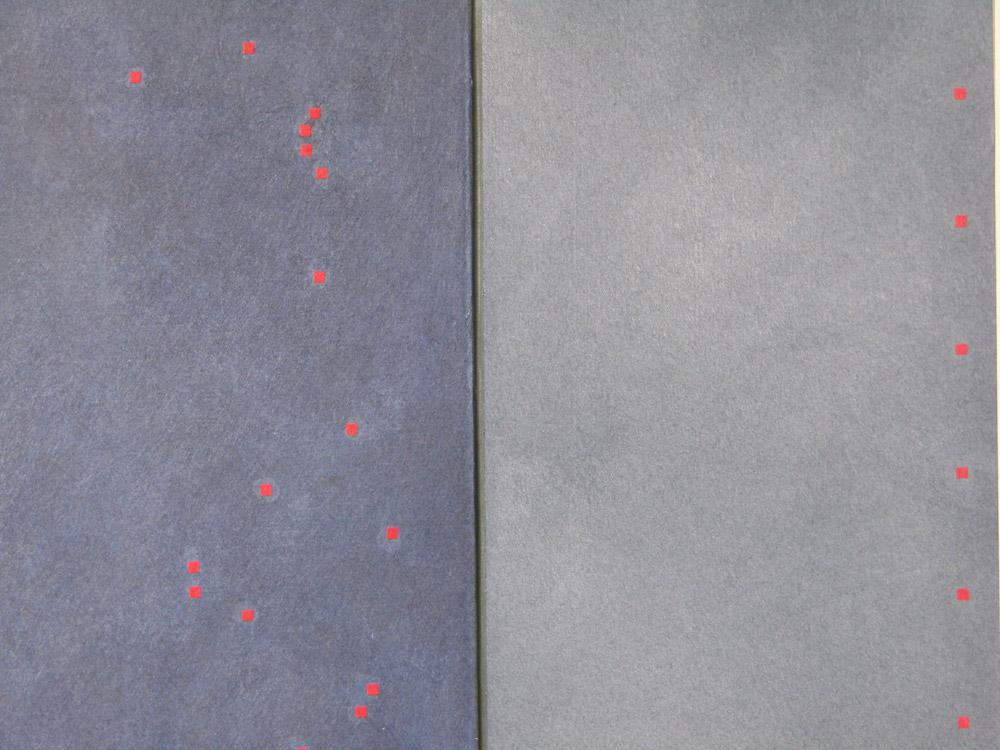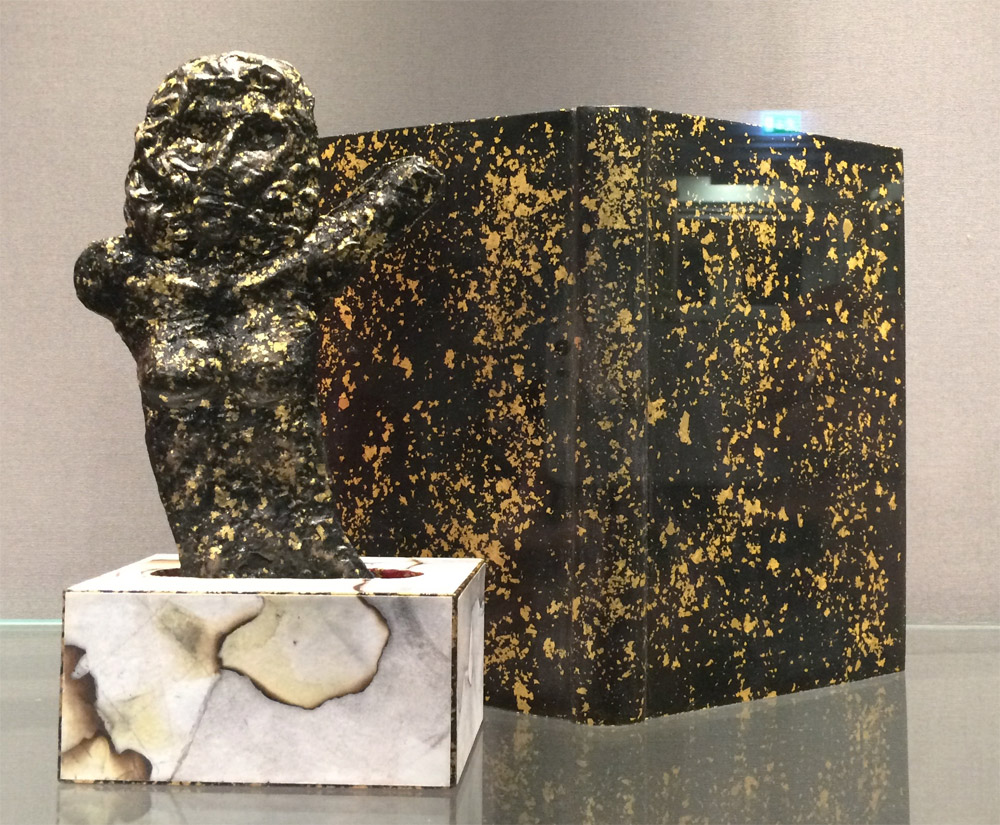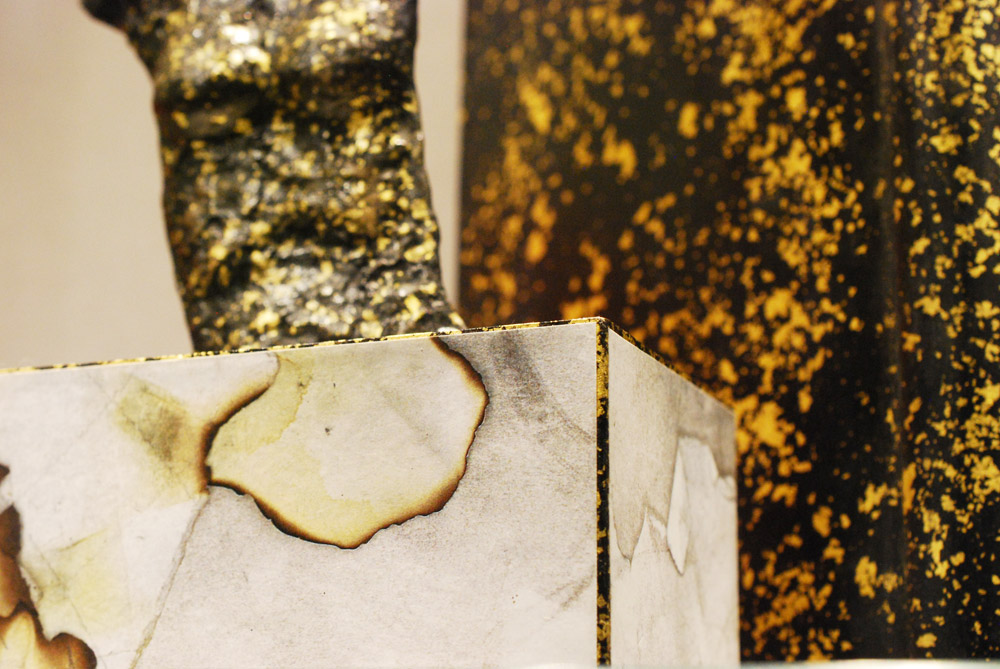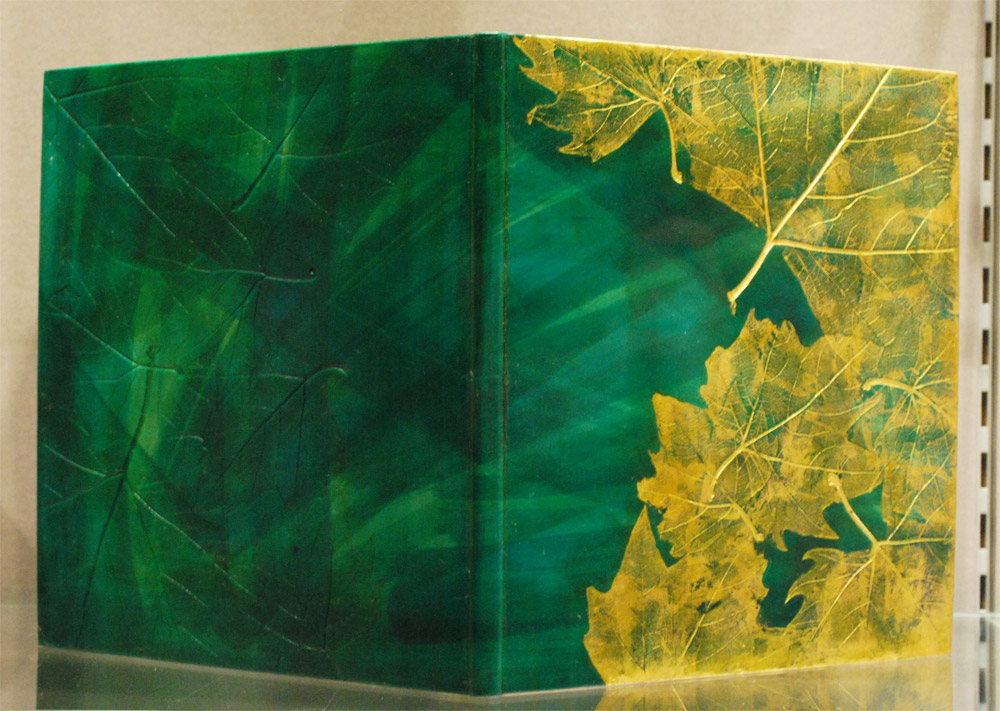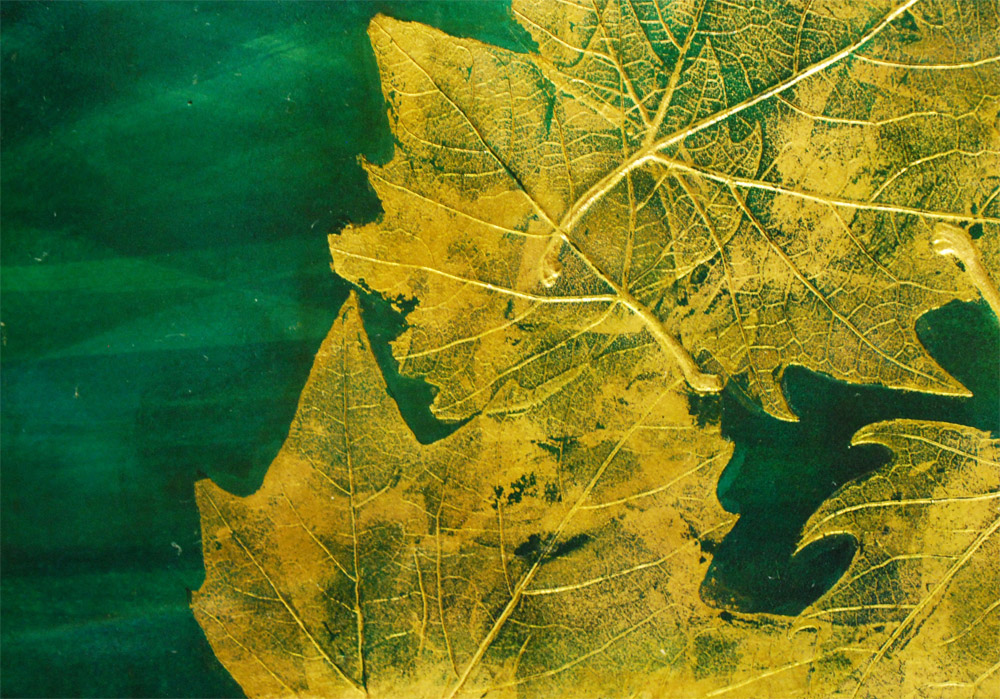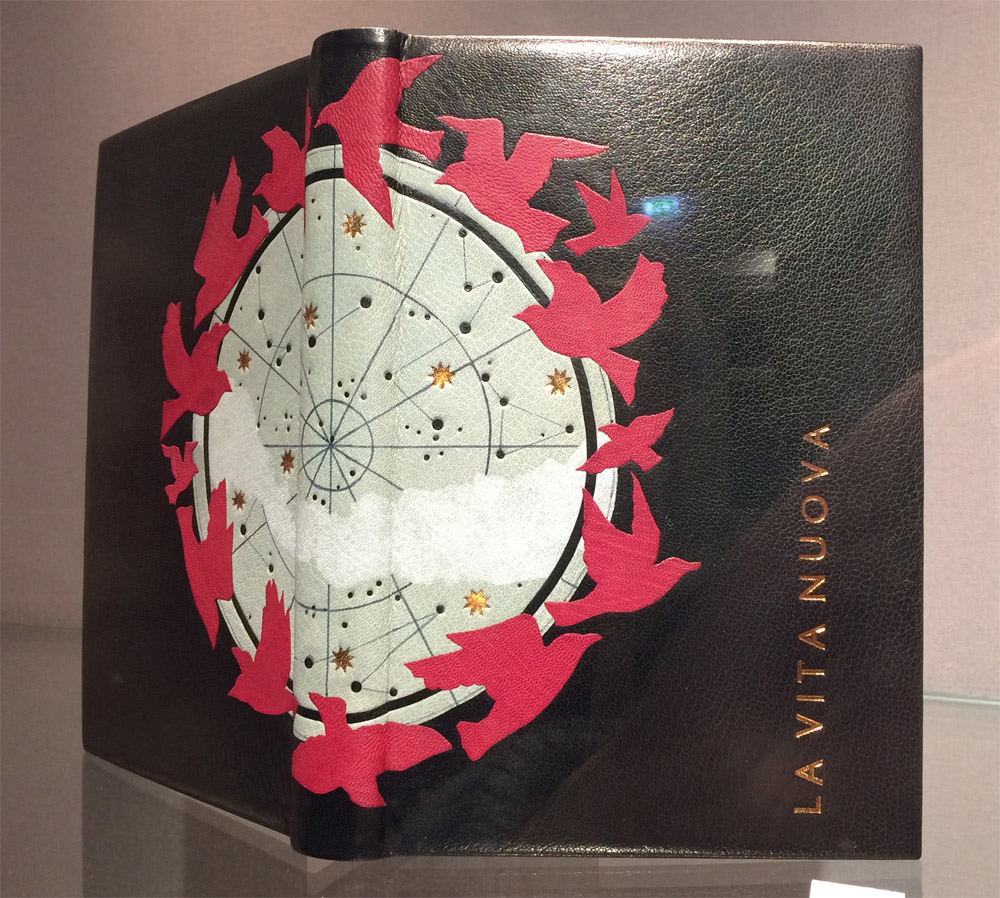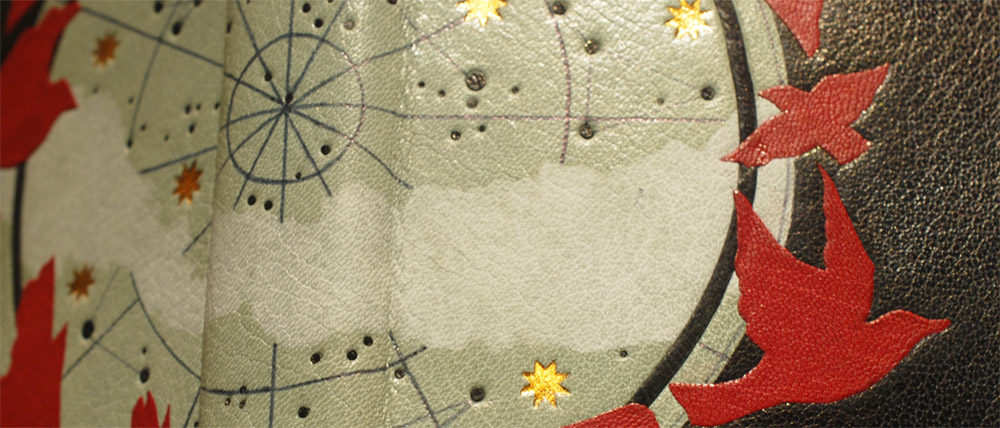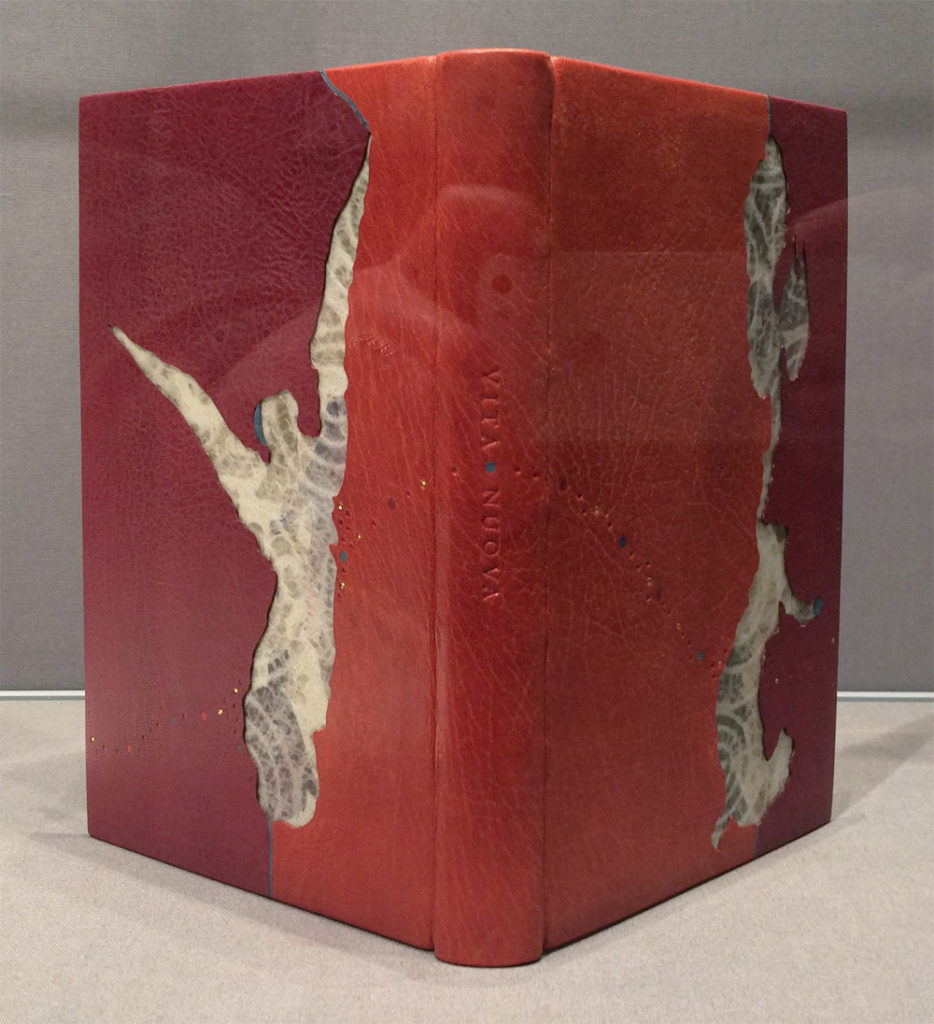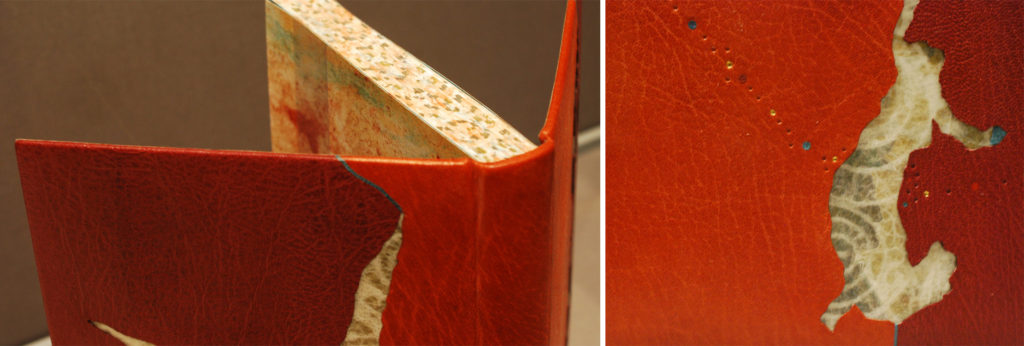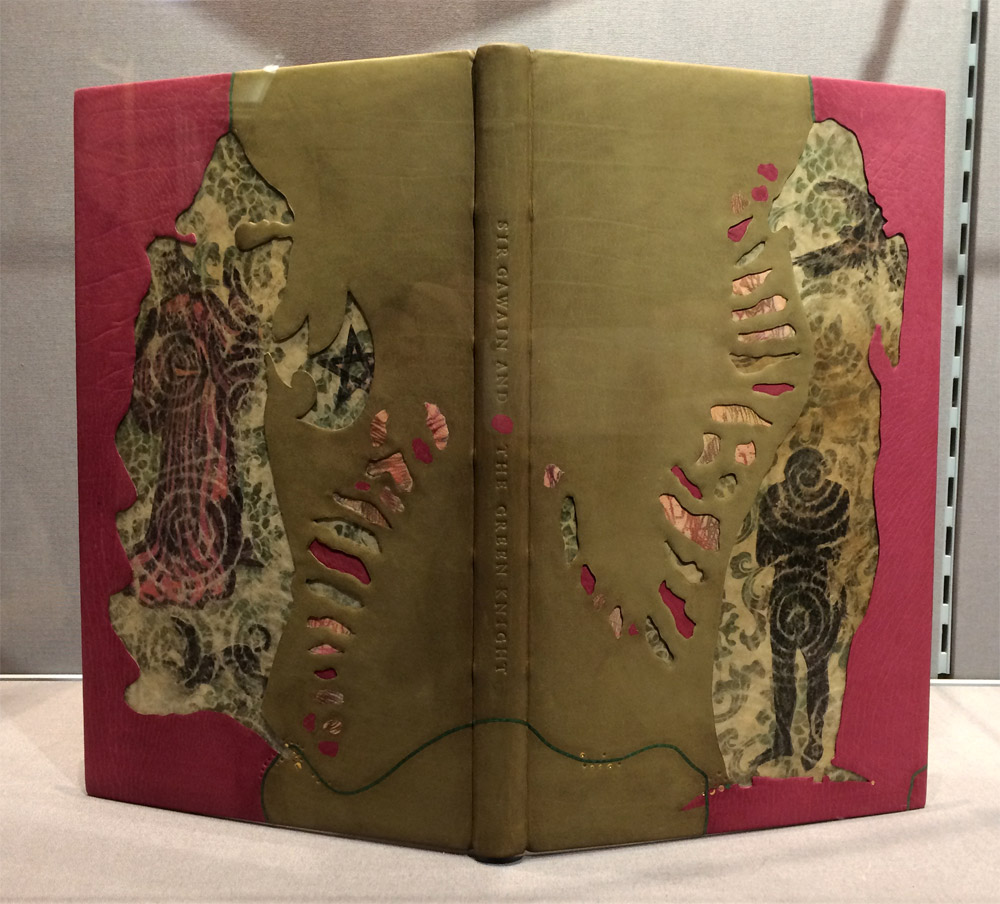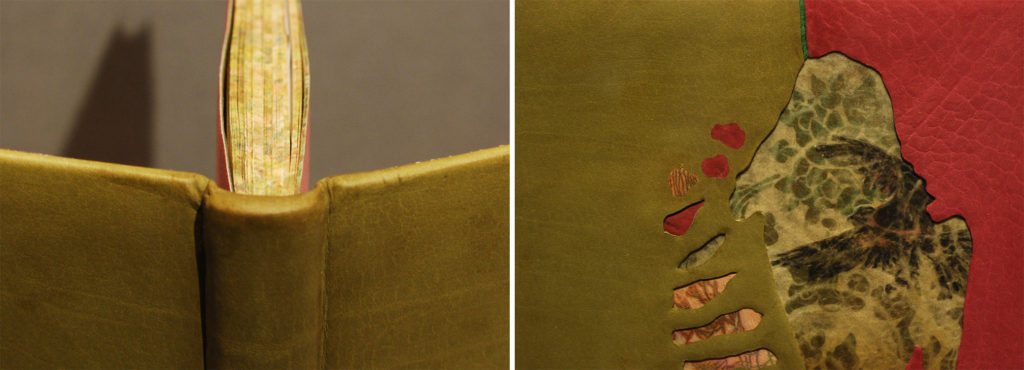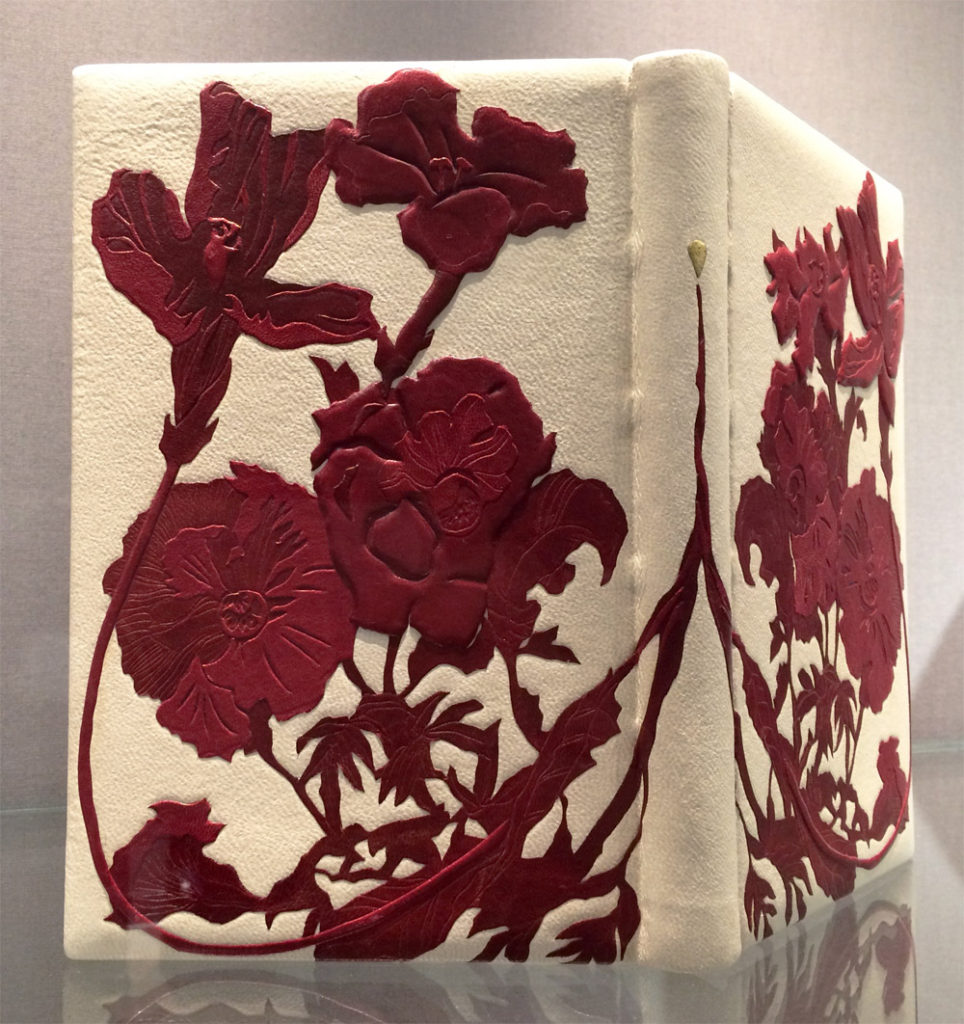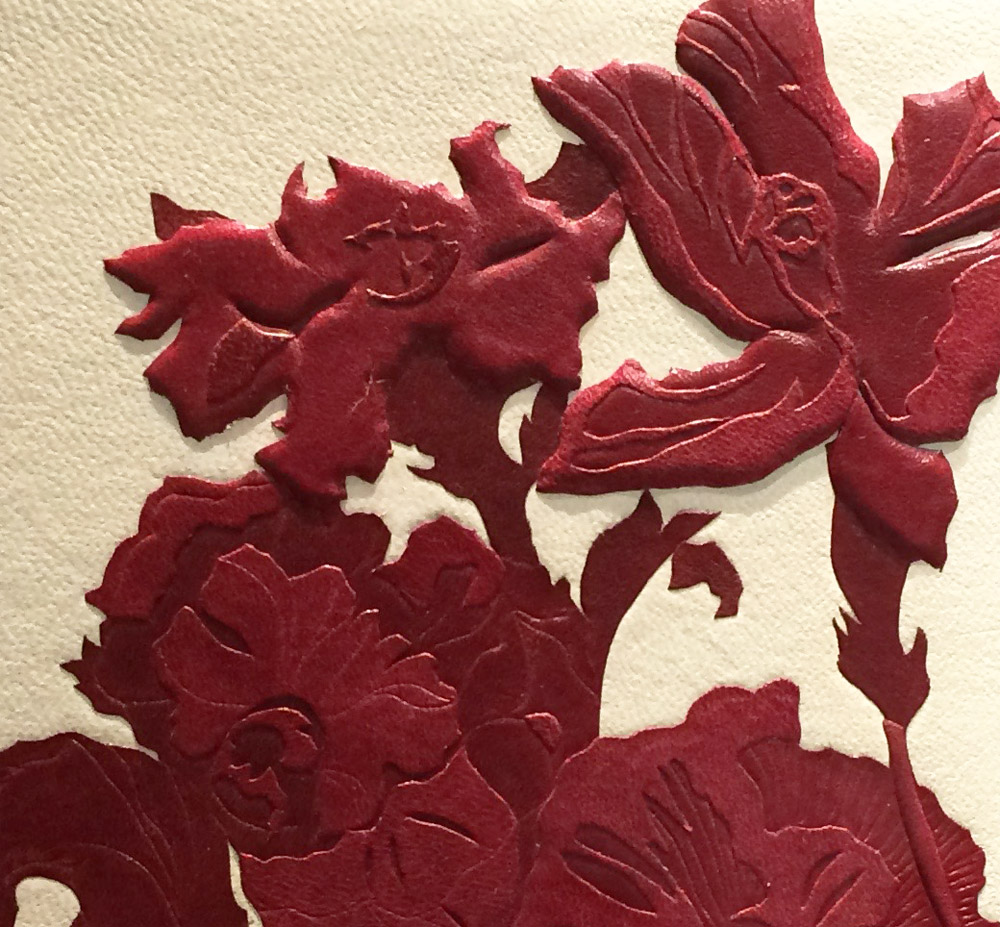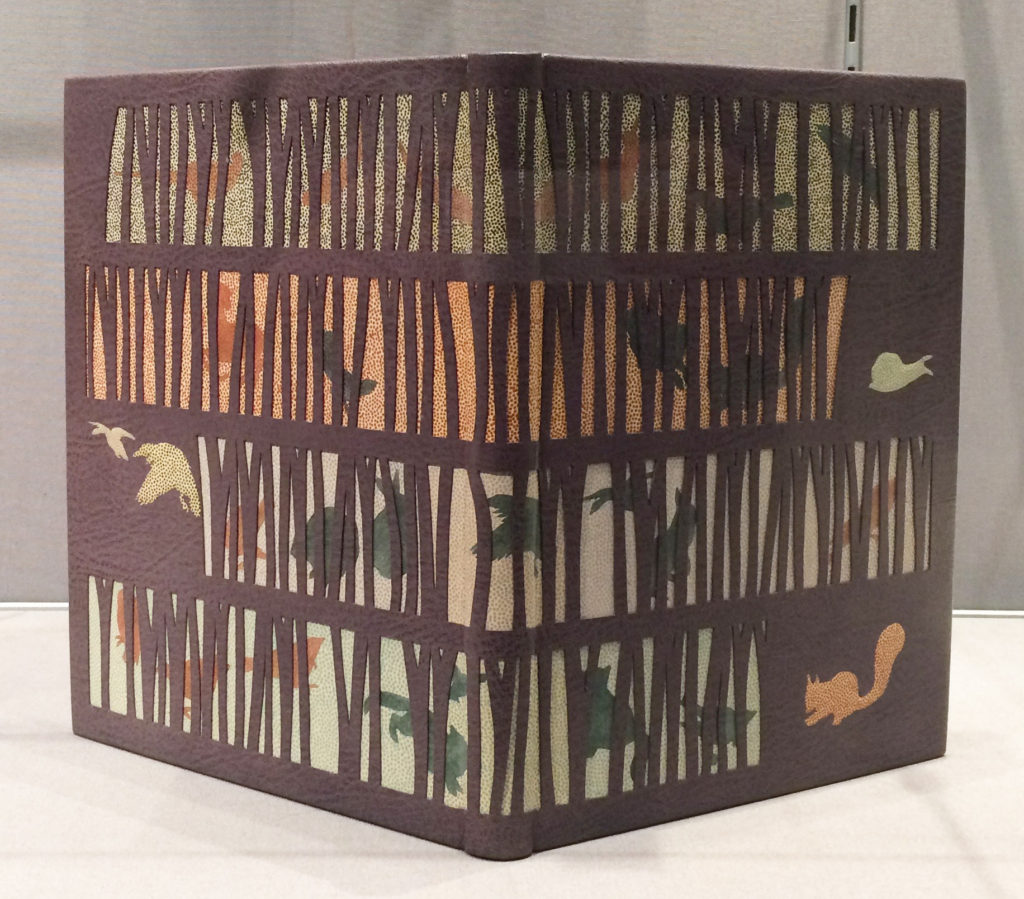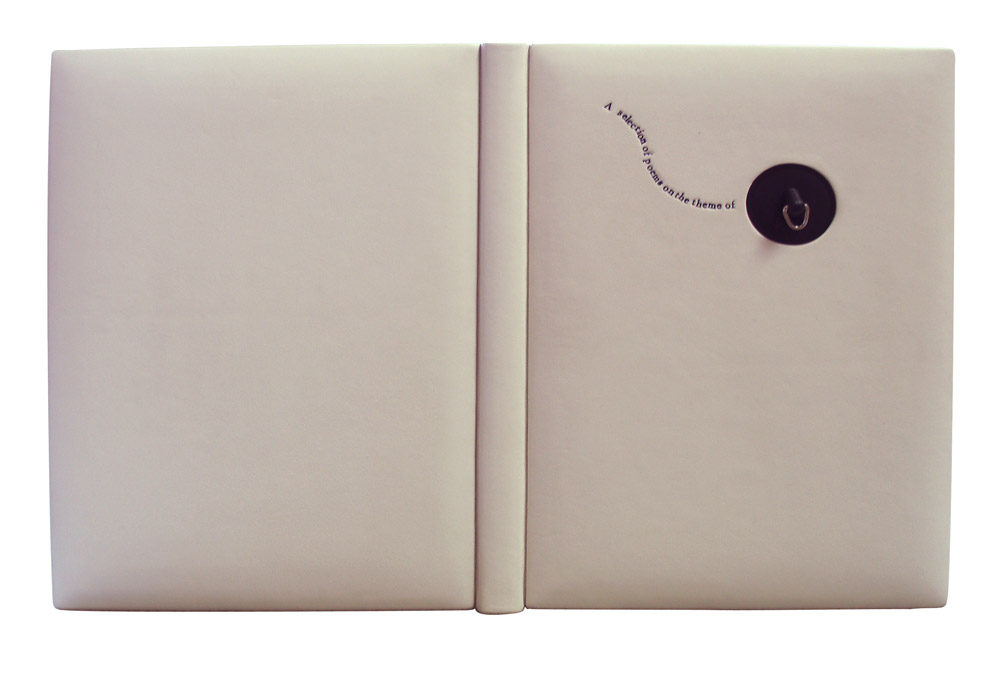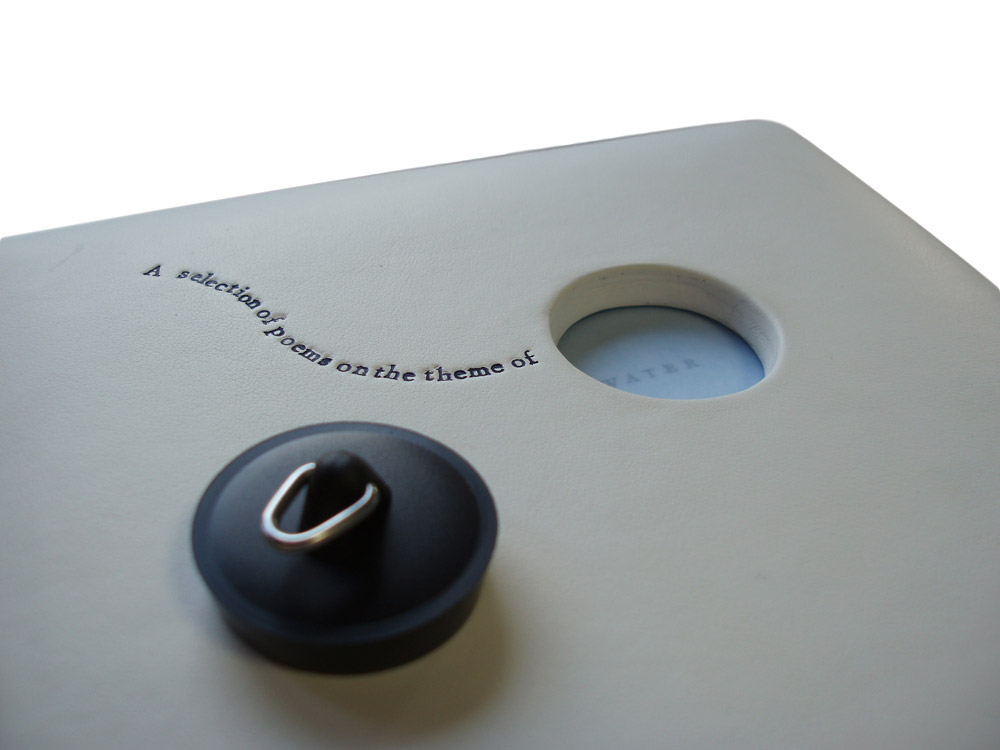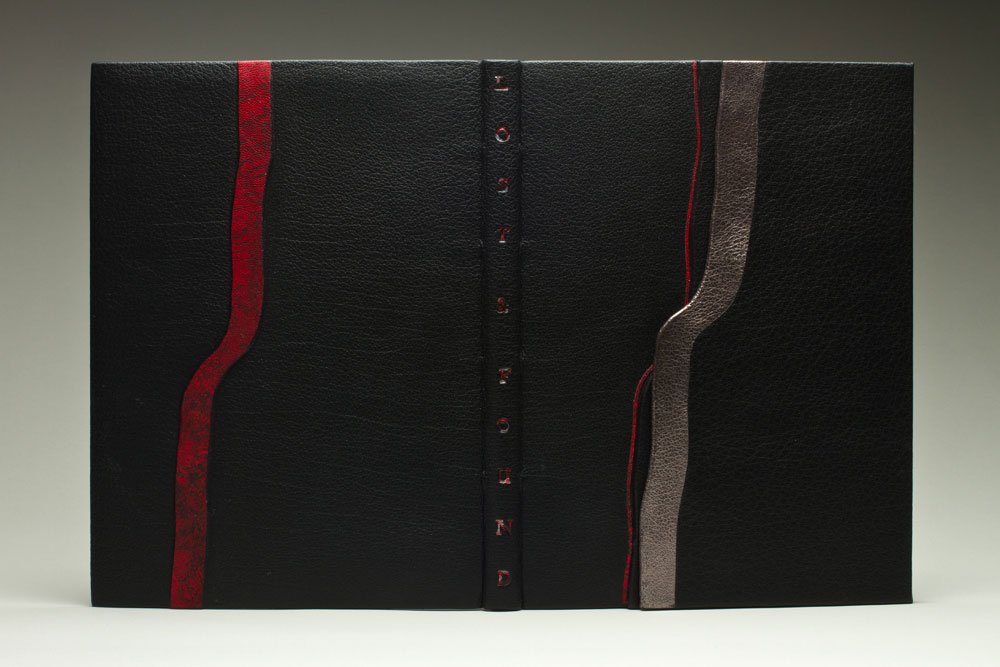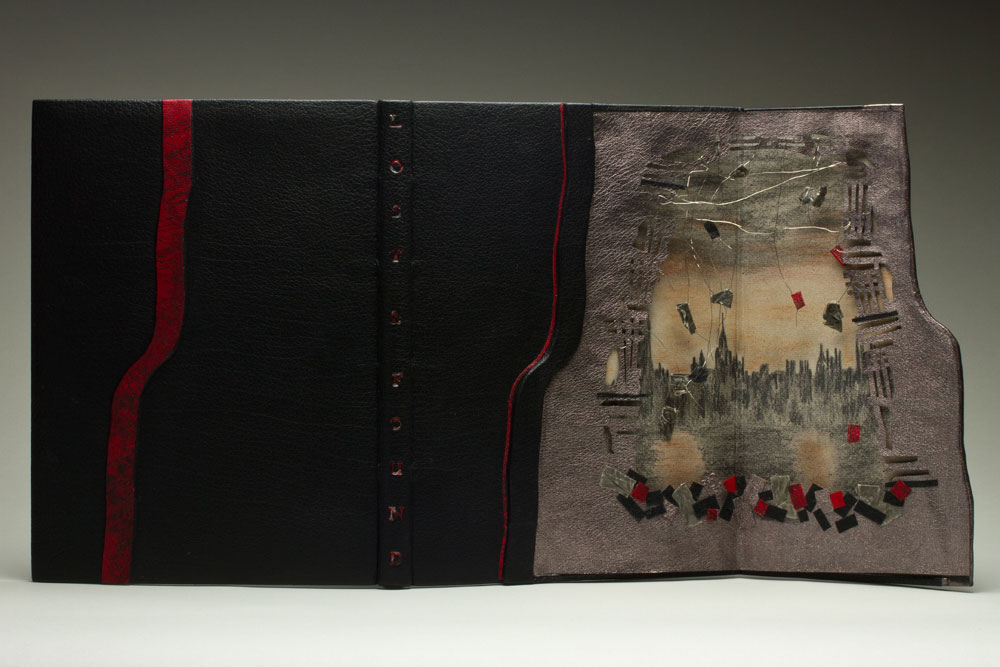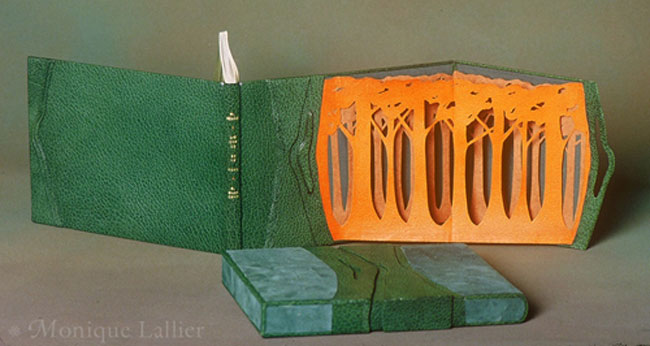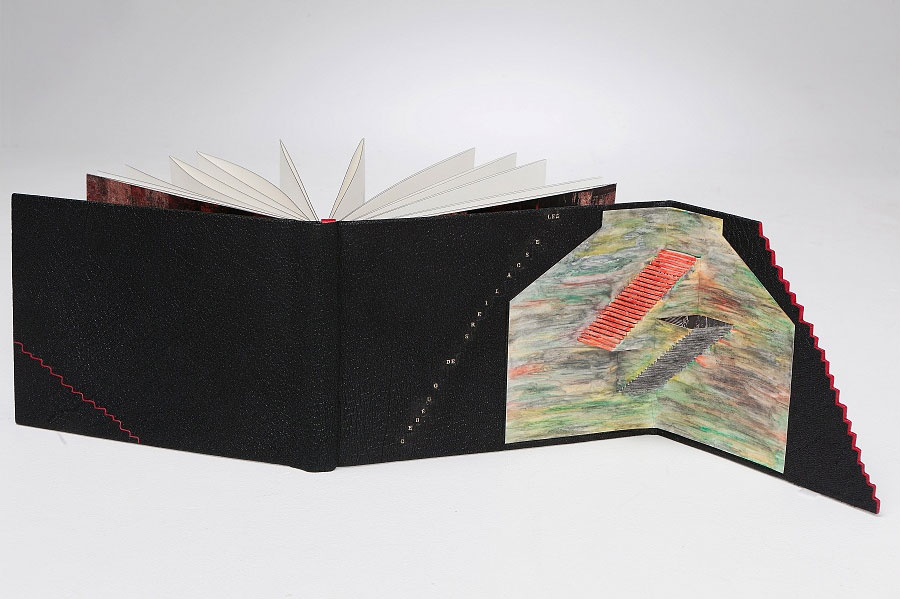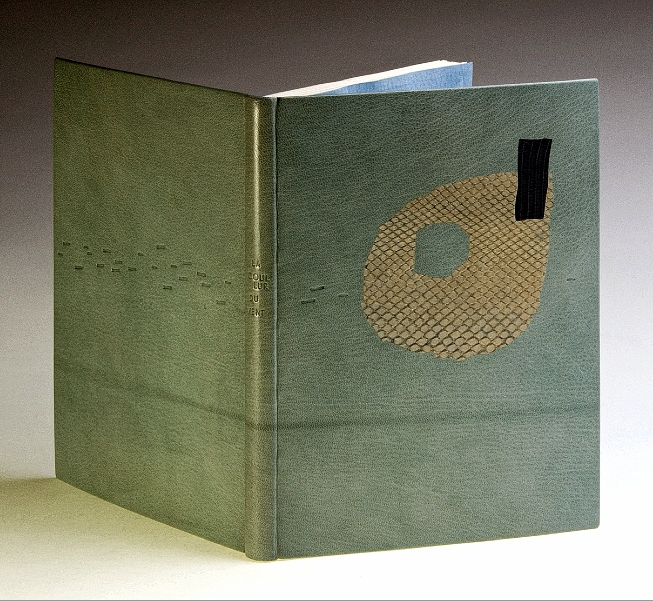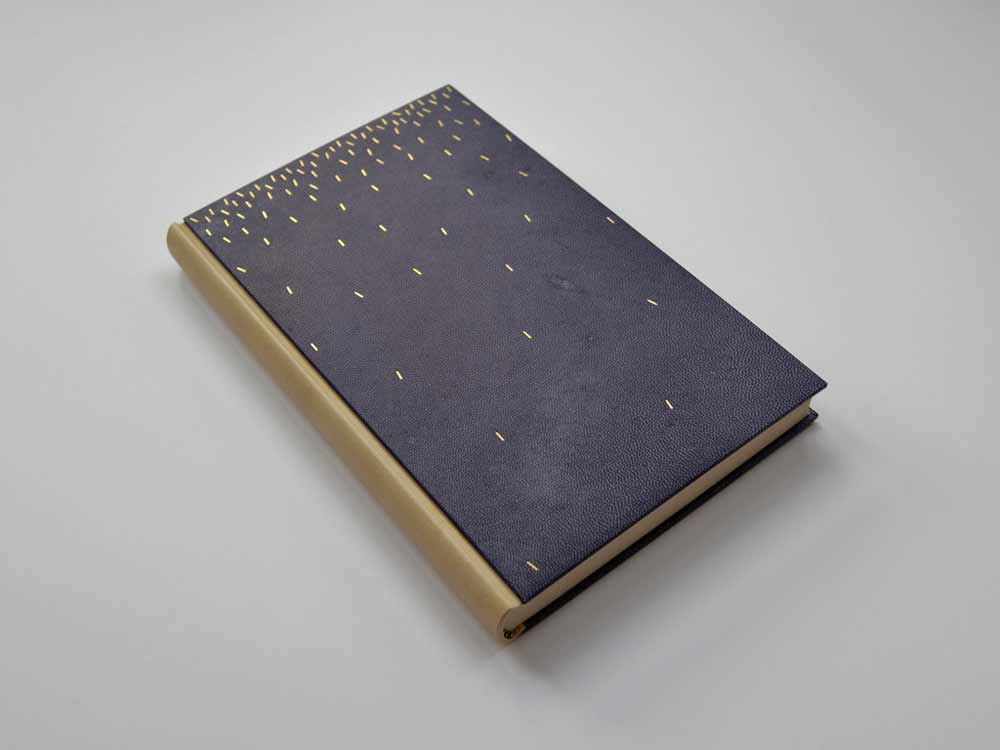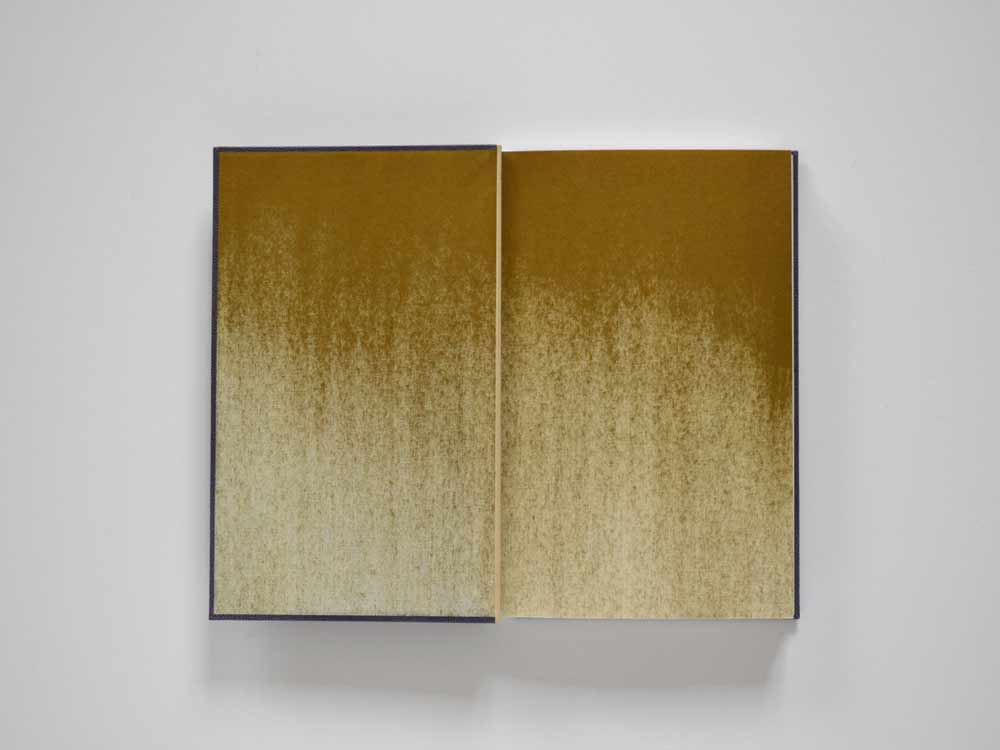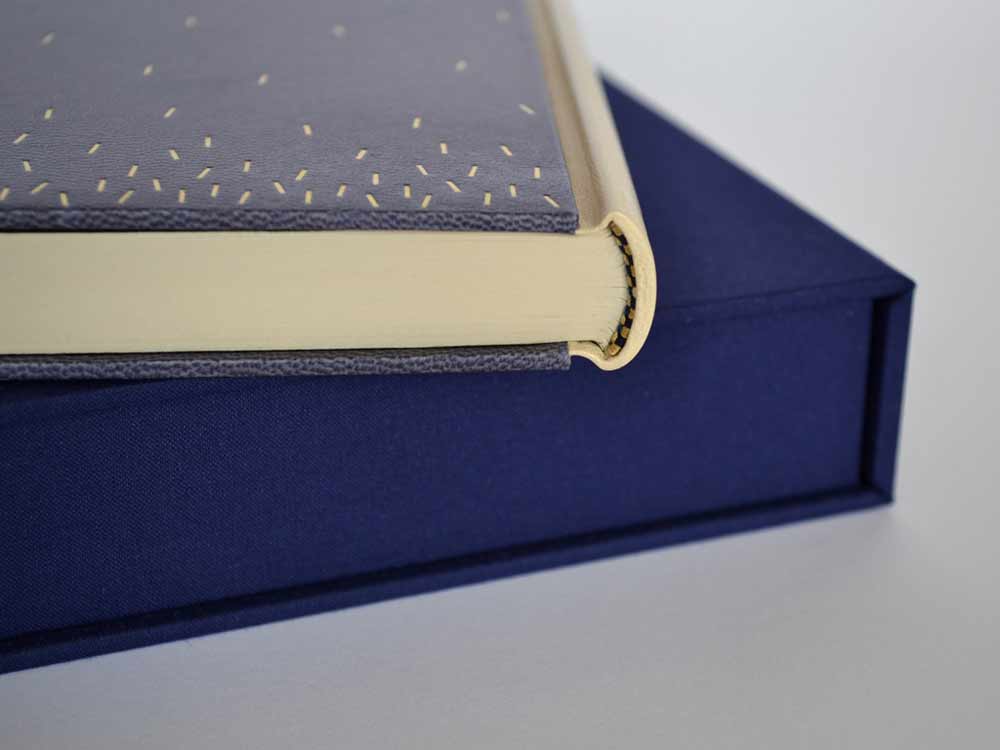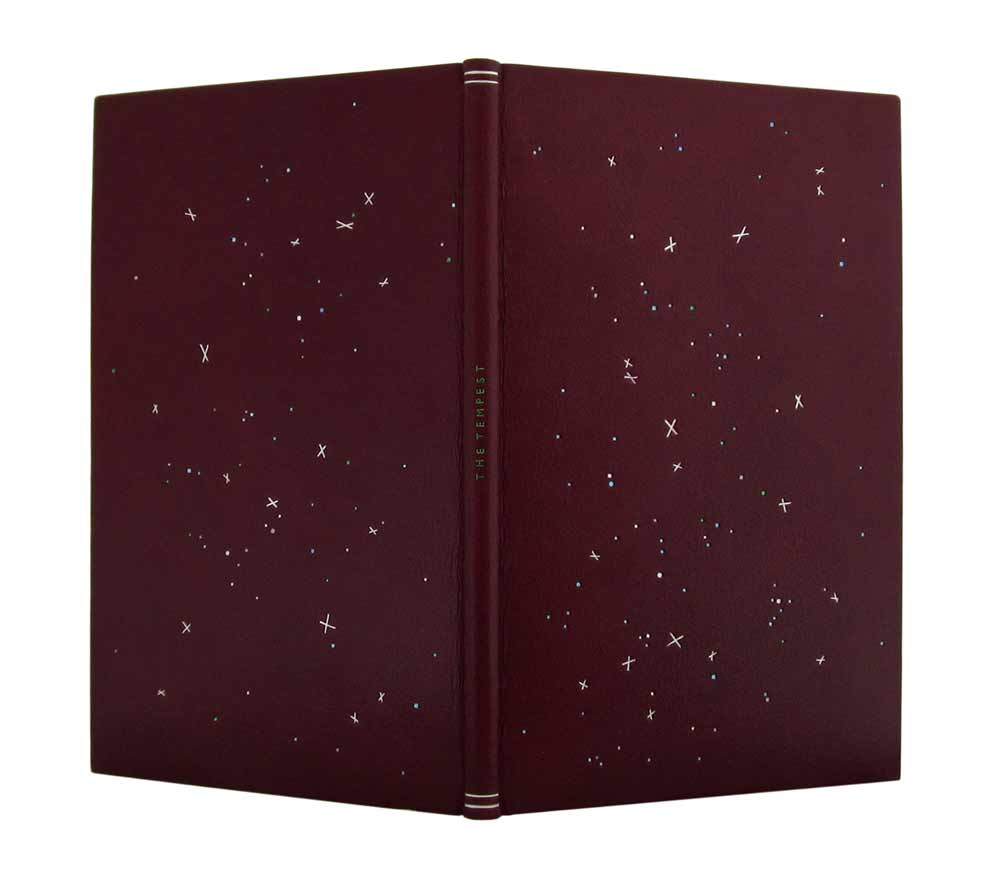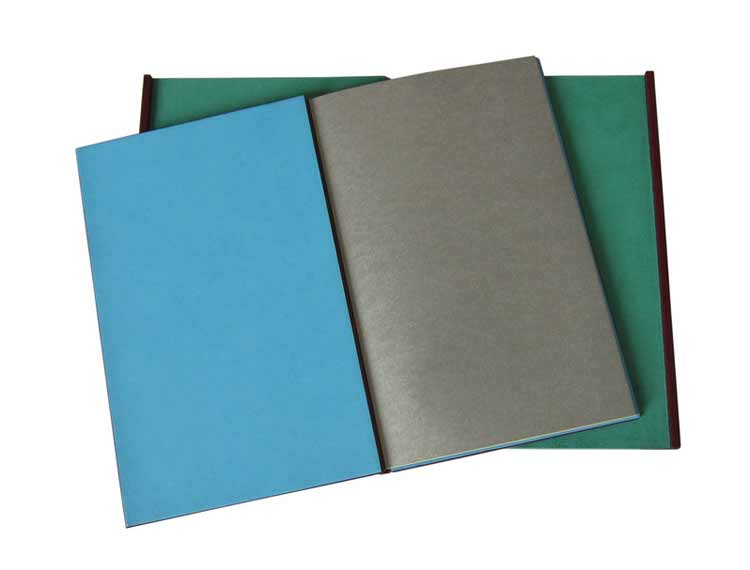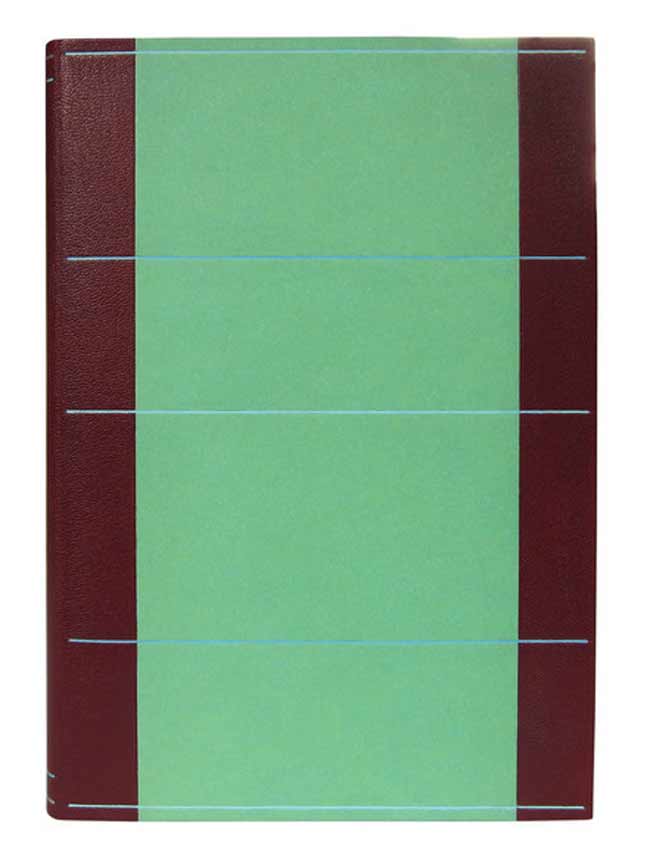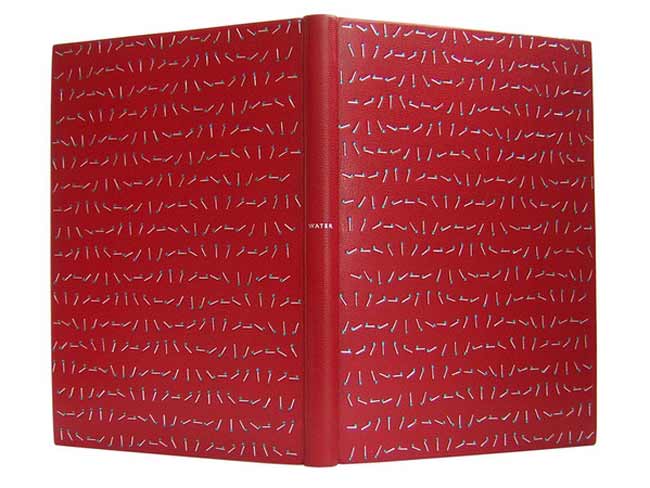Back in 2013, I interviewed Annette Friedrich and we only narrowly touched on the subject of her ambitious project to bind all nine of Virginia Woolf’s novels. Since that interview, Annette has completed this goal, exhibited all nine bindings at the Saatchi Gallery in London and published a gorgeous catalog! For this interview update, Annette and I will focus on the final six bindings of the series.
I struggle with Annette’s aesthetic and that is one reason why I am so captivated by her work. The designs on her bindings really take a hold of me. I am stricken by their abstract, chaotic whimsy. Her style of binding forges so many questions for me, both as an artist and a binder, so I really wanted to take full advantage of this opportunity to interview Annette again.
Back in 2013 when I first interviewed you for the blog, you had just completed Mrs. Dalloway aka Woolf IV, putting you about half way through your journey of binding all nine of Virginia Woolf’s novels. What sparked such an ambitious project?
Hey Erin, well, it all began a while ago, when I noticed a few shifts within my artistic practice. This may sound a little weird, but I see my books in a timeline, where one design builds up onto the next. Obviously not directly and not even that consciously so, but with hindsight I can often detect a link.
Do you know the late Danish author Inger Christensen? When asked about her writing, she came back with something that I can directly relate to: ‘(…) it does not matter where one is. However, one has to make sure to steer directly into the impossible. Of course one has to keep the balance on the way, though only under the single condition that the balance is made less safe. Less and less safe.’
So when I said earlier that I noticed a shift, it was exactly that. I had already stepped onto the tight rope and had done my first fumbling steps. I saw that the haughty geometric designs were on their way out, and that, somehow, ‘life’ was casually shuffling onto the scene. I was curious beyond anything to see where this would lead me to. But I have to admit that excitement and delight shook equal hands with apprehension. The fear of not being able to reach this, to stumble, fall and fail.
I decided to bracket this journey within a set project and started to think about what it might look like. Two factors played a guiding role, one was that I needed a good run of books to pull it off (cross the rope) and the second was to find an author who offered me a helping hand along the way. Virginia Woolf it was!
You recently published a book documenting the project. In the introduction you write about how Virginia Woolf’s writing style changed over her career. I wonder if you feel like you are ready to leave behind some part of your design process and explore something new.
Yes, I certainly was ready for a change and Virginia Woolf egged me on! Her novels are amazing. Each is a stepping-stone to the next. She started out with a very ‘linear’ take on writing and then pushed out her boat and explored new and experimental ways, becoming more and more abstract. She was the ideal (unbeknownst) partner for me. I decided to bind all of her nine novels in chronological order and follow suit.
Mrs. Dalloway was bound in 2012 in a dark aubergine goatskin. The hand sewn silk endbands and edge-to-edge doublures are green with silver flyleaves. The design is tooled with three shades of silver folio, gunmetal and five pigmented foils in white, grey, blue and two different greens. The book is housed in a chemise which is inlaid with green paper and tooled with three shades of silver foil plus a green pigmented foil. The slipcase is covered with silver paper and lined with green Alcantara (a suede-like material).
What I enjoy about the design for Mrs. Dalloway is that at a glance the covers appear to mirror each other, but as my eyes wander back and forth the differences begin to emerge. Each cover takes on a life of it’s own. Did you design each panel to represent the two protagonists or are you finding inspiration elsewhere in the text?
Now this is a very good question, although I immediately wanted to cry out with an alarmed ‘Nothing represents anything, ever!’. But that is not quite right either. I am interested in space, rhythm and atmosphere, and these are the points of connection with the/a novel. So in this instance, I was taken in by the fully developed stream-of-consciousness technique, that Virginia Woolf had started to explore in her previous novel, Jacob’s Room (my Woolf III). This ‘take’ of hers is very persuasive. So no, my aim was not to represent the two protagonists as such, but rather her ‘flow’. I was interested to create something that sweeps you up and in the air, from one element to the next, with no stop, no pause, connecting everything in one big move where the small mini-events get swallowed up in the overall take.
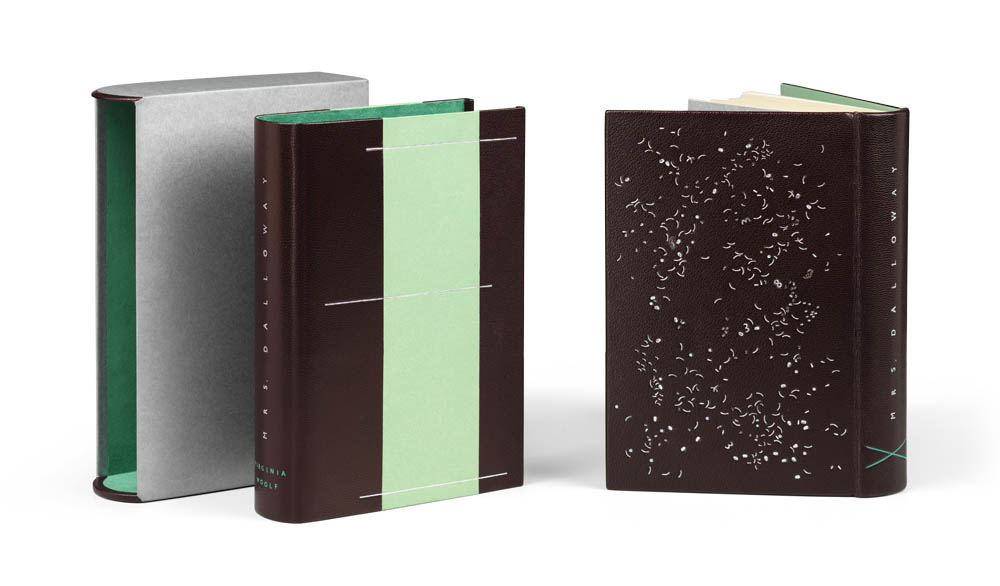 The nine bindings in this series of work, feel cohesive and connected. There are several obvious visual tells that make this statement true. But one aspect is your treatment as a binder, you follow a formula for the binding and for the housing. I want to ask about the choices you made for styling the chemise in particular. At the beginning you include a simple linear tooled design on the chemise that contrast greatly with the design on the binding, then by the sixth book, Orlando, the tooled design on the chemise disappears and you begin playing with the layout of the paper. Any reason for this?
The nine bindings in this series of work, feel cohesive and connected. There are several obvious visual tells that make this statement true. But one aspect is your treatment as a binder, you follow a formula for the binding and for the housing. I want to ask about the choices you made for styling the chemise in particular. At the beginning you include a simple linear tooled design on the chemise that contrast greatly with the design on the binding, then by the sixth book, Orlando, the tooled design on the chemise disappears and you begin playing with the layout of the paper. Any reason for this?
I do like to work within the three-fold combo that is the book, chemise and slipcase. Every element brings something to the table and has to work/commune with the others. Obviously the book’s design calls the tune and the others join in. However, this is not done by way of repetition, but rather by adding different layers. Sometimes they enhance and sometimes they jar. It’s like music really, the main thing is that the overall soundscape makes sense.
At the beginning of 2018, you were a part of Crafts Council’s Collect 18, an exhibition that spanned 40 galleries over 4 continents. Woolf I – IX was on exhibit at the Saatchi Gallery in London. Can you speak about how you got involved in this exhibit and how your work was received by the public. In the US, design binding work is rarely seen in a space akin to the Saatchi Gallery, is this also uncommon in England?
Yes, it’s the same here. Bindings tend to get shown in book related environments only, such as libraries etcetera. Collect 18 was actually presented at the Saatchi Gallery, which is a great venue right at the heart of Chelsea. Amongst all of the invited craft galleries Designer Bookbinders was the only one to show books and fine bindings. There was a lot of terrific work on display and it was great to rub shoulders for once with all of the other crafts within an art gallery setting. I think the visitors were quite stunned to come across fine bindings in such a context, with many being not at all familiar with our rare, orchid-like craft. However, they were very interested and the invigilators rarely got a quiet moment.
I witnessed this from across the aisle, as I myself had been invited by the Crafts Council to show my Woolf I – IX group on a separate solo stand. I had just finished them and was super delighted to be able to show them at such a prestigious and stimulating cross-disciplinary exhibition.
Now that the project has come to an end, do you feel a sense of completion, that you achieved the mission set forth from the beginning of the project?
Yes! is the short answer. I had set out in the hope of change, and ‘change’ has come. The first design is miles away from the last and I have been able to tentatively discover a completely new direction. I am still not completely sure how I got there, but over time one thing just led to the next. Everything got more difficult and complex, and I did stumble and had to pick myself up again along the way. I think though, that I have finally grown up and found my voice, so lets see where it will take me to next…
A beautiful documentation has now been published, that traces the development of this project, which, as it turns out, took seven years to complete. WOOLF I – IX ! 98pp, with an introductory essay and 1:1 reproductions of the bindings, background information, and text excerpts.
Text: Annette Friedrich, Virginia Woolf
Design: BUCHmacher, Germany
Photo: Shannon Tofts, Scotland
£30 + postage / reserve your copy at www.annette-friedrich.com
